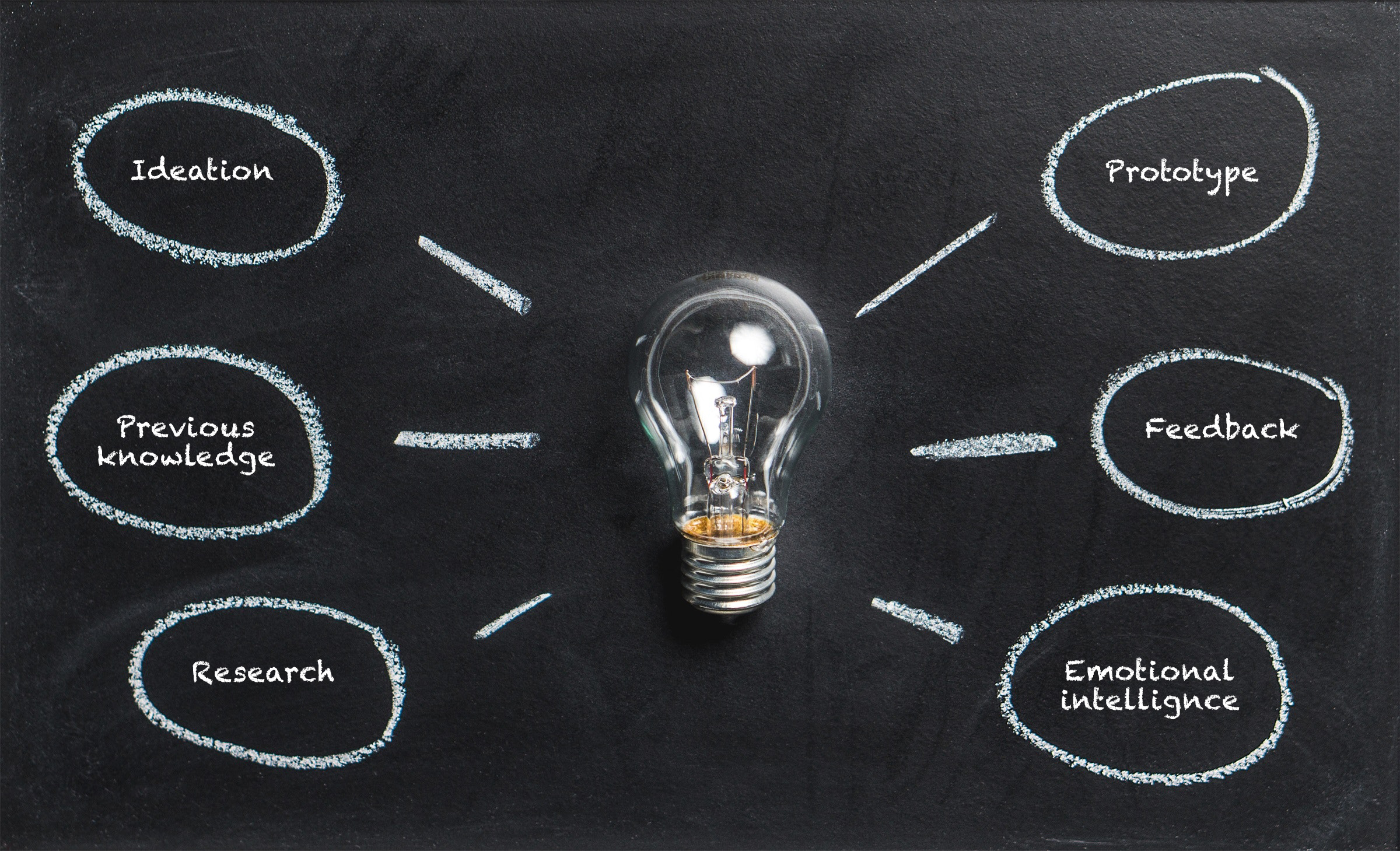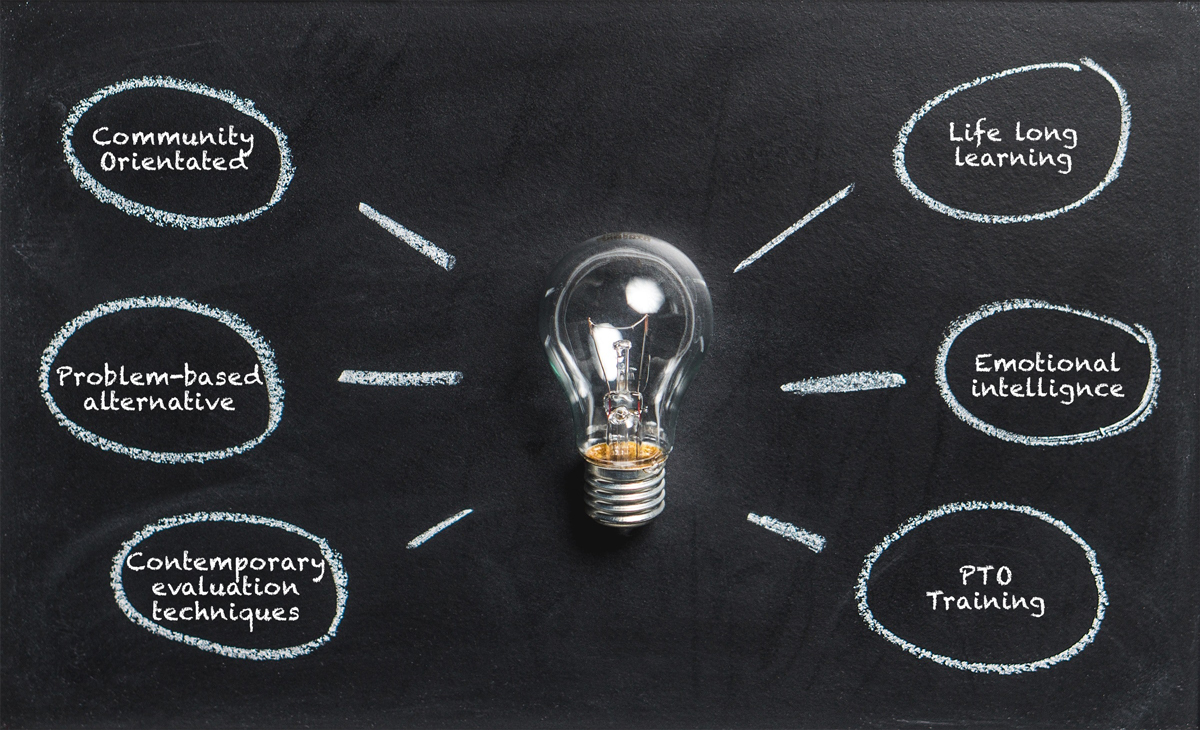What is Problem-Based Learning?
The short answer to this question is that problem-based learning (PBL) is an instructional methodology.
When we think of instructional methods, it is easy to imagine a classroom filled with rows of desks and chairs, perhaps a chalkboard, whiteboard, or video screen at the front of the room, and a teacher who provides information, asks questions and calls on students and then doles out learning assignments or proctors tests. This is easy to imagine because most of us have experienced this type of instruction throughout our lives.
Another instructional method you might recognize is coaching. In coaching, whether for sports or career development, the instructor determines “where you are” (in the skill or practice) and then helps you to improve by providing skill instruction and then offering feedback and encouragement.
You might be able to think of other forms of instruction and to envision what they look like for you. It is likely that most of these, as with the two examples above, involve a teacher who possesses knowledge, who works to pass the knowledge or skill to the student. Sometimes teachers consider the ways in which students learn, and sometimes they don’t. Typically, the teacher passes along information; frequently this involves lecture and PowerPoint, which the students are expected to experience and absorb. The students are tested, and after they pass the test(s), they leave the classroom with the expectation that they can apply the “lessons learned.”
None of this is PBL. In fact, PBL almost literally “flips the script.” In a PBL classroom, the students are presented with the problem with very little information to apply to it. It is the students who become the subject matter “experts” and, while it is important that the PBL instructors have a good grasp of the information, it is more important that the instructor facilitates student learning, rather than have “the correct answer.” The PBL facilitator’s knowledge base allows them to point to resources, to guide students in effective directions, and to develop curriculum and rubrics that will fuel learning and appropriately evaluate student performance.
Here is a quick example of traditional instruction compared to PBL: In traditional learning, medical students attend years of in-class instruction regarding everything they might need to know, from biology to chemistry to human anatomy. Along the way, they are tested so the instructors are confident the students have “learned” the content. Then the students go into residency and they are expected to recall all the content so they can apply it to real life patients in need of treatment. Sometimes this works well, and for some students this is very difficult.
In a PBL classroom, first-year medical students are presented with a patient (or the “problem” of a patient) experiencing medical issues. The students are then tasked with diagnosing and “treating” the patient. So, in the context of “solving” the patient’s medical issue(s), the students must learn the things they would need to know, including biology, chemistry, and human anatomy. In essence, the students learn in the context of solving the problem, rather than learning “all the stuff” and then later trying to recall it when it becomes necessary. The PBL facilitator ensures that the students are considering all the varieties of problems that might arise, that they are learning from their errors, that they are learning effectively and efficiently, and that they have the proper learning resources available.
Why Problem-Based Learning?
PBL allows for a few different benefits. First, it causes the students to go about the learning in the way(s) that work best for them. All avenues for learning are open in PBL including lecture, PowerPoint, dialogue, self-directed research and reading, videos, interviews with experts, interviews with those affected, note-writing, small-group collaboration, and experimentation. Allowing students to learn in the way that’s most effective for them obviously helps learners internalize the information best.
Second, PBL creates learners who are inquisitive, who can identify what they don’t know and need to learn – learners who are capable of self-directed learning. This is useful later when new problems arise for which training has not yet been provided.
Third, PBL causes learners to experience problems differently. Rather than becoming insurmountable obstacles, problems become opportunities for learning and problem-solving. PBL students learn a process of inquiry that becomes familiar. They do not have to “re-invent the wheel” each time a new problem arises – they simply launch their PBL process and trust it to help them along.
And finally, why go through all this if the students don’t learn the content effectively? PBL facilitates effective content mastery because students attach emotion to their learning. Rather than passively hearing a lecture, PBL students wrestle with the content. Learners can become frustrated, they celebrate small victories, and they are joyful once they “solve” their learning problem. Attaching emotion to the learning helps the learning become concrete and students have better retention and recall.
What is Police Problem-Based Learning?
PBL was actually created in 1969 for use in medical school (you can research this yourself – please look up McMaster University in Canada). Until 1999 PBL was not used in police training, with the exception of some use by the Royal Canadian Mounted Police Service. This changed when Greg Saville and Gerard Cleveland worked with the United States Department of Justice (USDOJ) Office of Community Oriented Policing Services (COPS) and members of the Reno, NV police department to create a new post-academy training model. The result was the PTO program as described on other pages of this website.
PBL was introduced to police training in the form of real-world, ill-structured problems that trainees would work through to learn the content of 15 different core competencies. As with the medical school model, the problems were intended as catalysts for learning, rather than strictly problem-solving efforts. However, police trainees are expected to treat the Problem Based Learning Exercises (PBLEs) as though they are real problems. Trainees identify the actual stakeholders, consider real-life implications of their decisions, research the legality and fiscal feasibility of their plans, and learn in the context of developing a strategy to approach the issues presented in the problem.
Trainees work in collaboration with others, including peer trainees, community members, and internal and external experts. Working in groups is a useful skill in the policing profession and learning to be effective here is a requisite skill that must be taught during the training period.
During post-academy (field) training, learners are presented with at least four different PBLEs, each focusing on a different phase of training: Non-Emergency Response, Emergency Response, Patrol Activities, and Criminal Investigations. The critical content for each PBLE is determined by trainers in each agency, thereby making the program flexible to each agency, indeed, even to each trainee. Incident response becomes one tool for learning in police PBL, not the driving factor for the learning.
Where police PBL extends the medical PBL model is in the learning and problem-solving process. The PTO program (and the police PBL course) teaches a creative problem-solving process that can be used beyond the classroom to facilitate lifelong learning and for problem-solving efforts. Police PBL also extends the medical model by integrating emotional intelligence skills, specifically, self-awareness, self-regulation, empathy, social awareness, and relationship management. These practices become part of the training content and model in police PBL because problem-solving and emotional intelligence are critical skills for policing professionals in the 21st Century.
We know now that the communities we serve expect our policing professionals to know and follow agency policies and procedures, to make ethical decisions, to collaborate on solving long-term community concerns, to demonstrate self-restraint, and to understand the implications of our actions.
PBL in police training is the only training model that focuses on content, problem-solving strategies, and the personal development of the learner. We are very proud of our efforts to integrate PBL into police training and have a variety of ways to help you improve the quality of your training through PBL.
Break free from your old training practices. Begin the progressive training of our future police officers.
The Police Training Officer (PTO) Program was designed to be a community oriented, problem-based alternative to the traditional Field Training Officer (FTO) Model.
Host a Course
Is your agency interested in hosting a PTO or PBL Instructor Certification course? If so, we can help with certified instructors and logistics. If you want to implement PTO in your agency, or keep your program strong with your own in-house certified PBL Instructors you’ll want to receive the best in training- from those who’ve created and developed the program and practitioners who have extensive experience in all aspects of PTO and PBL.



